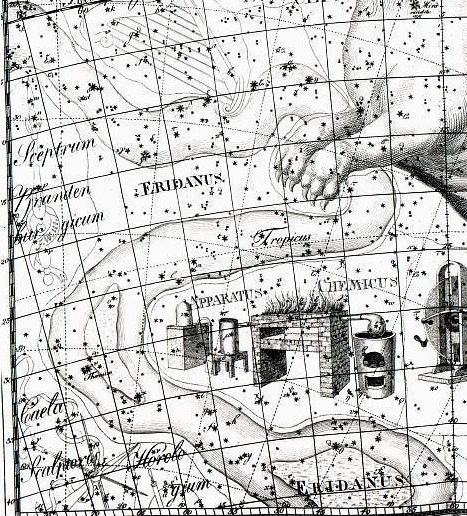5. Probably Gb8-10 was chosen to be a cardinal marker by the creator of the text, because the glyph has been incised so firmly into the wood. The numerical relations are also possible to interpret in this direction. Furthermore, also the star Acamar was presumably regarded as a cardinal point. In the picture below it is on the northern bank of the lake named Eridanus: Another gap is in the Stream higher up, in the bend just south of the tropic of Capricorn. Acamar is rising 1 day (4 m) before Menkar (α Ceti), at the nose of the sea monster:
With a 2nd spring equinox south of the equator in day number 452 (= 87 + 365 = 266 + 186) Acamar could be a sign of the last day of winter and Menkar a sign of the first day of summer:
723 - 537 = 186 days is the difference between the day numbers of winter solstice south of the equator and the simultaneous summer solstice north of the equator. This key number can then be applied to all the cardinal points, e.g. is autumn equinox north of the equator at a day number which is 186 lower than spring equinox south of the equator. Counting from an assumed autumn equinox (south of the equator) in day number 266 and 186 days ahead to spring equinox (because 452 - 266 = 186) will lead us to glyph number 266 + 186 = 452 and nuku rua in Gb8-10:
Spring equinox south of the equator in day number 452 corresponds to a simultaneous autumn equinox north of the equator in day number 452 - 186 = 266. The position of mago in Ga7-16 could possibly indicate a 'time zero', because 186 - 186 = 0:
Once upon a time Scorpio announced autumn equinox north of the equator and at that time it was at spring equinox south of the equator. If mago in Ga7-16 illustrates Scorpio, then it could agree with such a 'time zero' position in the sky roof. Although 186 can be applied to find not only the 'inverted' cardinal points - and indeed every such 'inverted' day of importance - on the other side of the equator, there is only one pair of consecutive quarters which add upp to 186:
This is evidence for the beginning of side a being - in some way - equivalent to autumn equinox (south of the equator):
|
|||||||||||||||||||||||||||||||||||||||||||||||||||||||||||||||||||||||||||||||||||||||||||||||||||||||||||||||||||||||||||||||||||||||






